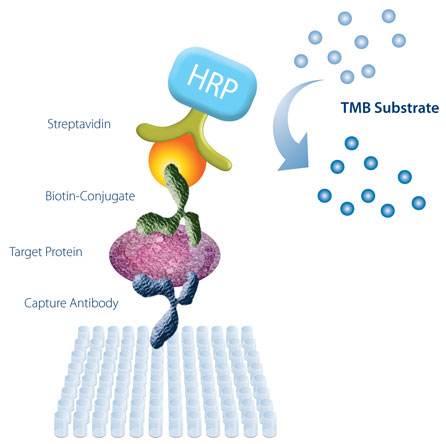During Elisa assay, high quality kits, well performed instruments are necessary factors for a successful experiment. But some times, wrong or improper operation may ruin the experiment even you own both two. So how to make a perfect experiment?
1. Proper and standard use of pipettors. No matter when feeding or dilution, in purpose of reducing errors to minimum, operation of pipettors must be very standard. First, while absorption, head of pipettors needs going to 1-6 mm deep under liquid in 90 degree. Pipettors of 01-10 μL capacity need go to 1-2 mm under liquid, 2-200 μL pipettors are 2-3 mm, 1-5 mL capacity pipettors are 3-6 mm. Heads of pipettors must be cleaned three times in advance(Sucks and ejects liquid three times).
2. Blood samples selection and cautions. If severe hemolysis occurs for blood samples, the remaining hemoglobin in wells of array plate owns peroxidase mimetic activity, substrate visualization causes false positive. Serum mixed with red blood cell may subside or adhere to wells with polythene, and difficult to be cleaned. If any bacteria contamination, bacteria may have endogenous HRP, it will also cause false positive. If samples are not fully solidified, to save time, serum may be centrifuged without blood solidification which may cause serum remaining fibrin. While Elisa array, this fibrin will form fibrin block which will also result false positive.
3. Rigor of experimental operation: Put into incubator after feeding samples. If samples are too many, you need to operate in batch, in meanwhile, operation time must be controlled strictly according to instruction to avoid man-made incubating time extension. During incubation, all wells must be sealed completely, otherwise, liquid of positive samples may be evaporated. When feeding samples, the cleaning of pipettors and absorption amount must be correct which will depend the accuracy of experiment. Edge effect will occur when incubation, the value of the edge may be higher. For an objective result judgment, QCS needs to be placed properly.
High quality Elisa kits, well performed instruments, interference elimination of various factors, and correct operation are all necessary for a successful Elisa array. If you are newbie to Elisa array, never expect a quick success, what you need is quality, not quantity, so you need to write down your scheme before every experiment, make self-examination and improvement after experiment. Following above, then sooner or later, you will have qualitative leap and
draw perfect standard curve finally.
